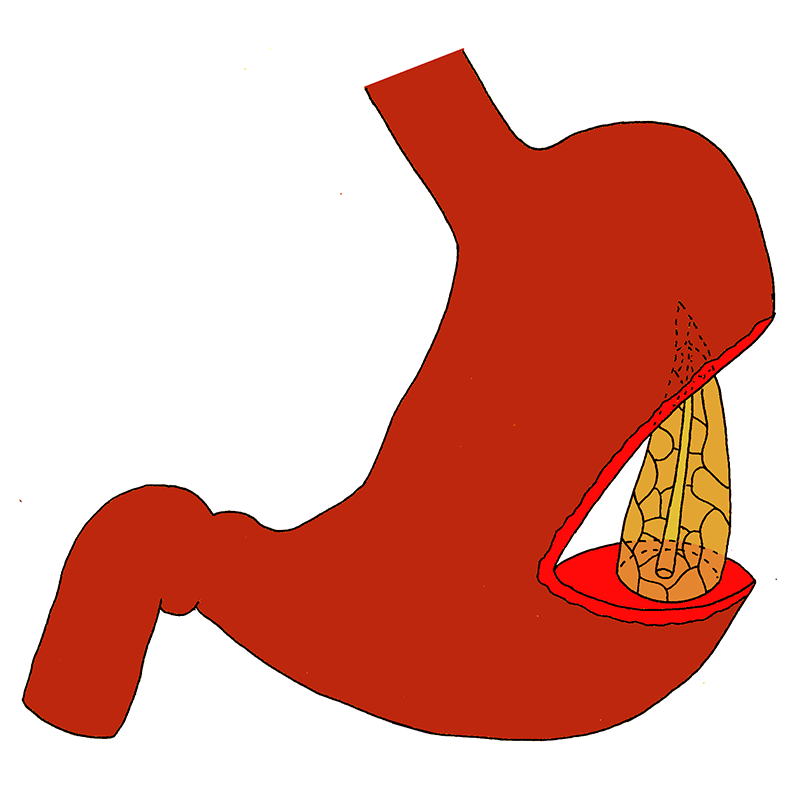Technique:
With resection of the seromuscular wall
- An incision is made in the seromuscular layer of the jejunal wall, comparable with the size of the pancreatic stump.
- Sutures are placed between the posterior edge of the seromuscular jejunal incision and the posterior pancreatic capsule to form the posterior part of the outer suture-row.
- A small opening is made in the centre of the resected serosa, with a diameter that matches the diameter of the main pancreatic duct. Consequently, the jejunal mucosa is exposed at a point exactly opposite the main pancreatic duct.
- The inner suture-row forms the actual duct-to-mucosa anastomosis: to this purpose, the pancreatic duct is sutured to the jejunal mucosa in all directions.
- To complete the outer suture-row anteriorly, the anterior part of the seromuscular jejunal wall incision is anastomosed to the anterior pancreatic capsule.
[metaslider id=645]
Without resection of the seromuscular wall: an alternative way to perform the two-layered duct-to-mucosa end-to-side pancreatojejunostomy is without seromuscular incision in the jejunal wall. As a result, the small opening opposite to the pancreatic duct is made in the full-thickness of the jejunal wall. Sutures from the inner, duct-to-mucosa suture-row are now circumferentially placed between the main pancreatic duct and the full-thickness […]








